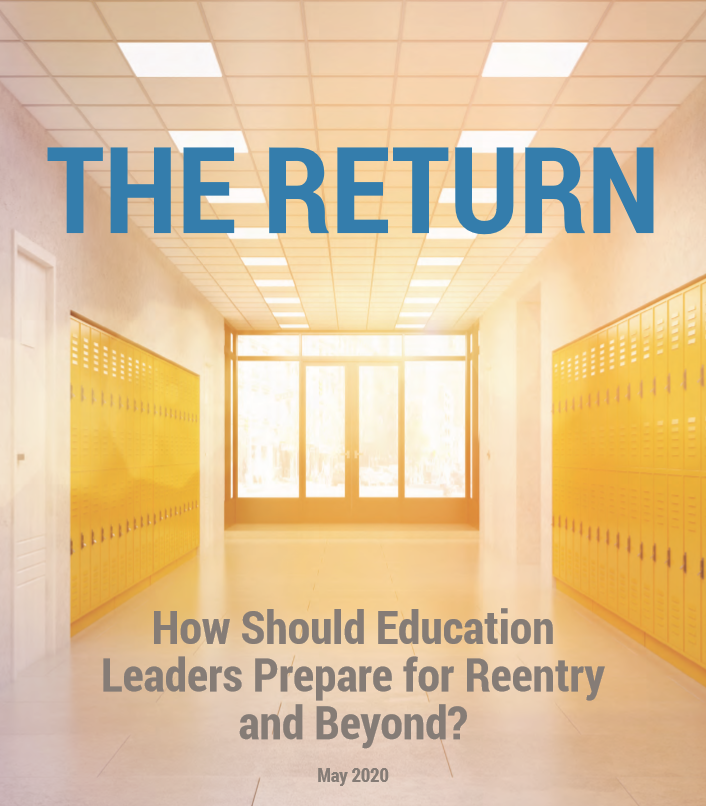 Editor’s note: redefinED guest blogger Ashley Berner, deputy director of the Johns Hopkins Institute for Education Policy and associate professor at the Johns Hopkins School of Education, and David Steiner, the institute’s executive director, comment on their new report, jointly released with Chiefs for Change, that outlines relevant research and provides key recommendations for reopening K-12 schools when public officials deem it safe to do so.
Editor’s note: redefinED guest blogger Ashley Berner, deputy director of the Johns Hopkins Institute for Education Policy and associate professor at the Johns Hopkins School of Education, and David Steiner, the institute’s executive director, comment on their new report, jointly released with Chiefs for Change, that outlines relevant research and provides key recommendations for reopening K-12 schools when public officials deem it safe to do so.
COVID-19 brought face-to-face learning around the world to an abrupt halt. Now, after weeks and months of remote learning, some countries are beginning to open the schoolhouse. Others, including most U.S. systems, will not resume brick-and-mortar operations until August or September. The first order concern is, of course, the health of our families and teachers.
But education leaders already are wrestling with critical issues that are next in line, such as: How will we structure instruction to maximum effect? What additional supports should we build into the school year to prepare for abrupt changes in the future? And, most importantly, what is the best way to accelerate, rather than remediate, student learning in the wake of COVID-19?
To answer these questions, our team at the Johns Hopkins Institute for Education Policy partnered with Chiefs for Change to evaluate the research on interventions that work for students in normal times and in the wake of crises such as SARS in Hong Kong or tsunamis in Japan. The result is The Return: How Should Education Leaders Prepare for Reentry and Beyond?
Our guidance is evidence-based, represents the collective wisdom of our country’s forward-thinking chiefs, and offers concrete steps to scale up excellence. It is also sector-agnostic; the changes we suggest apply to district, charter, and private schools alike. A summary is below.
First, add hours and days of learning time to the school calendar, in line with international norms. Students in many countries take shorter summer holidays (6-8 weeks instead of 12!) and experience more days of instruction. Extending the academic year has lots of benefits, such as stanching the summer learning loss that particularly affects low-income children, and allows more young people to hold part-time jobs throughout the year.
Second, redesign staffing models to maximize instruction and social-emotional support. Teachers have different strengths. Some possess extensive content-knowledge expertise and deliver highly effective instruction; others are incredibly adept at connecting with kids and making them feel known and seen. Changing the model makes sense. Instead of aiming for smaller class sizes across the board, we should let “master teachers” lead larger classrooms, while teachers who are demonstrably excellent at providing individualized academic support and personal relationships can lead smaller mentor groups.
Third, help students build habits of self-direction and self-regulation. There are many ways to promote these capacities, but two that we mention in the paper are building in practice time for remote learning models and allowing meaningful consequences for academic success and failure. Too few American classrooms enable the “productive struggle” of letting students wrestle with a problem until it’s satisfactorily solved; too many assessments lean heavy on teachers without placing commensurate responsibility on students to learn the material. This needs to change.
Fourth and finally, use this opportunity to ramp up the rigor of classroom instruction. Remediation toward grade-level reading or math does not work in the aggregate; students who start behind usually stay behind. Instead of addressing students’ missing skills, we should be accelerating their access to knowledge-rich materials that challenge and delight them. Skills can be learned along the way. Teachers’ professional development should meanwhile revolve around excellent use of high-quality materials – the ones they actually use in the classroom. For their part, leaders should embrace – and incentivize – content-rich assessments that are integrated with strong curricula, in every tested subject, thus creating a virtuous circle around student learning.
We know that “high expectations” matter for student success. But copious studies from around the world lead us to the much more profound, and much more specific, nature of the “high expectations” that really do narrow achievement gaps and accelerate social mobility: expect students to master, synthesize, and deploy knowledge-rich content. (For more on why curriculum matters, see recent posts on this blog (here, here, here, and here). And keep in mind that two things matter: what we teach and how effectively we teach it.
COVID-19 has been devastating for entire domains of American life. There is much we cannot control as we look ahead to Fall 2020. One thing we can do, together, is use the unexpected pause on business as usual to design education for the better.



[…] New national report provides recommendations for re-opening brick-and-mortar schools […]